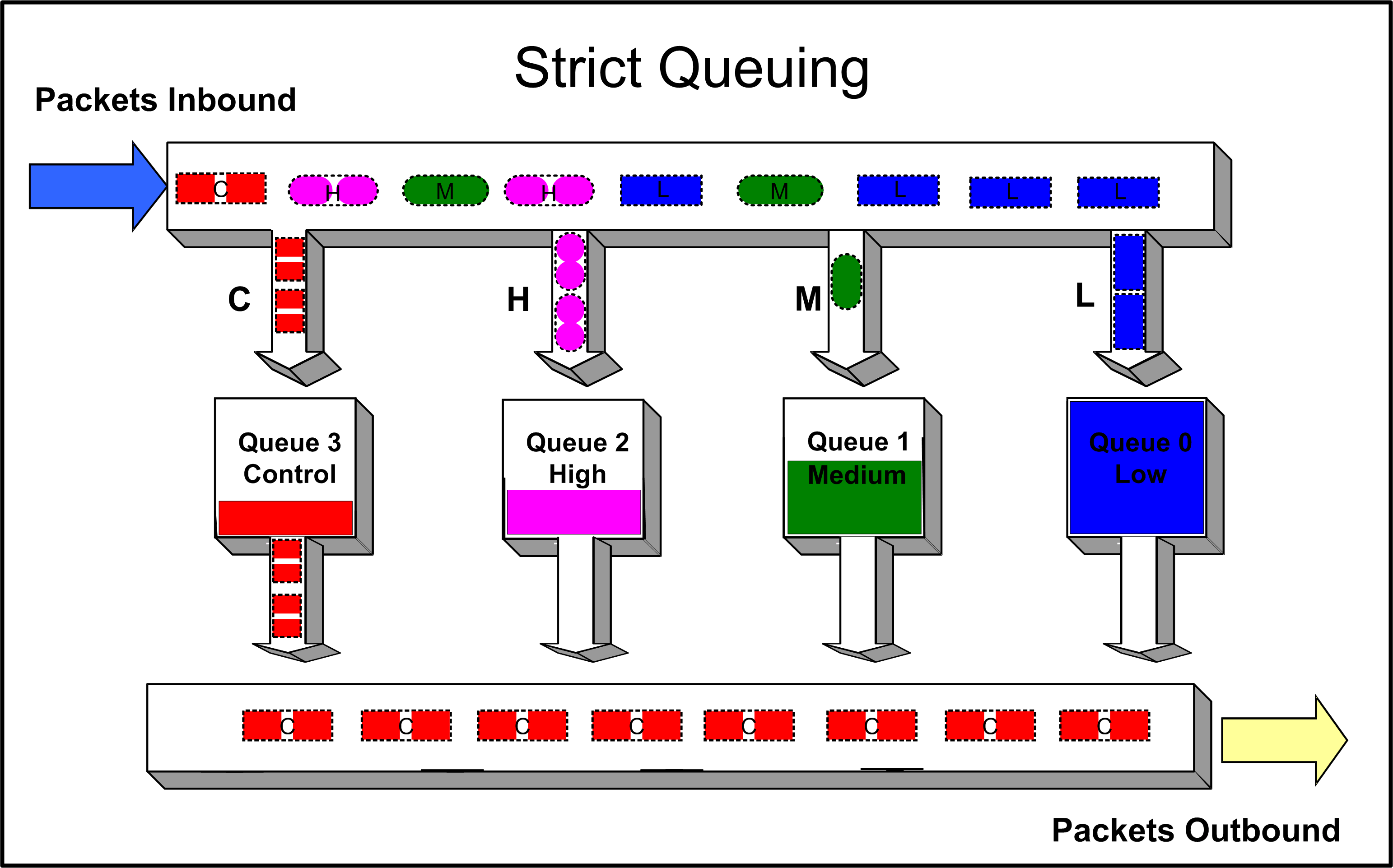With strict priority queuing, a higher priority queue must be empty before a lower priority queue can transmit any packets. Strict priority queuing is depicted in Strict Priority Queuing Packet Behavior. Inbound packets enter on the upper left and proceed to the appropriate queue, based upon the TxQ configuration in the CoS. Outbound packets exit the queues on the lower right. At this time only queue 3 packets are forwarded. This will be true until queue 3 is completely empty. Queue 2 packets will then be forwarded. Queue 1 packets will only forward if both queue 2 and queue 3 are empty. Queue 0 packets will only forward if all other queues are empty. Strict priority queuing assures that the highest priority queue with any packets in it will get 100 percent of the bandwidth available. This is particularly useful for one or more priority levels with low bandwidth and low tolerance for delay. The problem with strict priority queuing is that should the higher level queues never fully empty, lower level queues can be starved of bandwidth.


 Print
this page
Print
this page Email this topic
Email this topic Feedback
Feedback